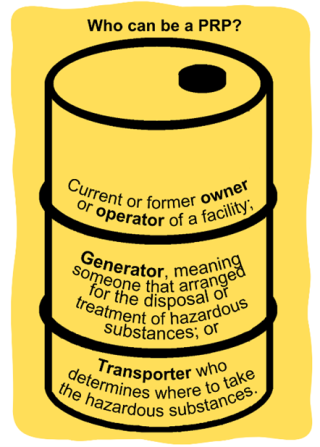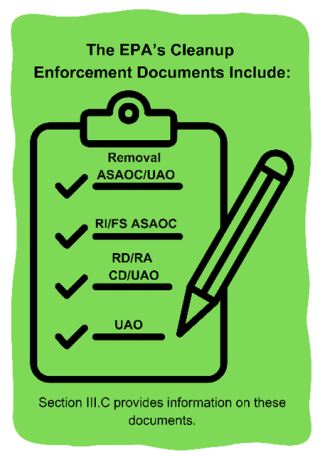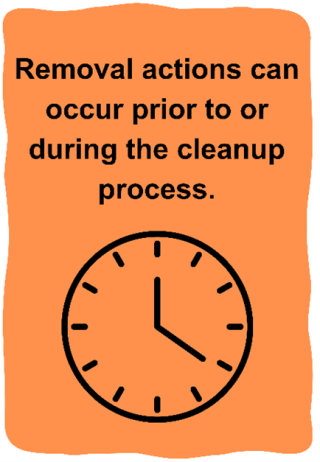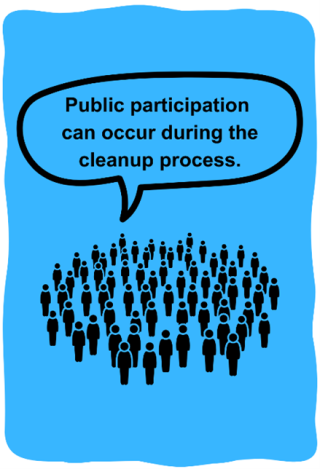Fact Sheet: How the Superfund Enforcement Process Works
To protect human health and the environment, the federal Superfund program focuses on making a visible and lasting difference in communities by cleaning up contaminated sites and ensuring that people can live and work without the risk of being exposed to harmful contamination.
This fact sheet is intended as a resource for the public seeking more information on the Superfund enforcement process and highlights the role that communities may play. Issued 7/1/1988. Updated 7/1/2025
Introduction to Superfund
Superfund (formally known as the Comprehensive Environmental Response, Compensation, and Liability Act) gives the U.S. Environmental Protection Agency the authority to clean up some of the nation’s most contaminated land and waterways.

EPA’s Superfund enforcement program plays a critical role by having potentially responsible parties (often called PRPs) clean up the sites either by funding the work or doing the work themselves under EPA’s oversight. If a PRP does not agree, EPA can order or sue the PRP to do the cleanup work. The agency can also perform the work itself and recover those cleanup costs from PRPs after the fact.
The cleanup of a Superfund site is either a removal action or a remedial action.
- A removal action is a short-term cleanup used to stabilize a hazardous incident or remove contamination that poses a threat to human health or the environment. Removal actions are either: emergency (immediate), time-critical (within six months), or non-time-critical (after six months of planning). Some examples include chemical explosions, hazardous spills, and mercury exposures.
- A remedial action is a long-term cleanup used to address contamination that is a risk to human health and the environment. For example, remedial cleanups may include an old factory or landfill where contamination exists. Sometimes remedial cleanups start after a removal action. Also, if an immediate risk is discovered during a remedial cleanup, a removal action can be taken to address that risk.
Overview of the Superfund Enforcement Process

After a site is discovered and early in the cleanup process, EPA conducts a search to find all the parties responsible for contamination at a site, like people, businesses, and government entities.
Once a PRP or multiple parties are identified, the Superfund enforcement process follows these steps:
- EPA notifies PRPs that they may be liable for contamination at a site.
- EPA begins negotiating an enforcement settlement agreement with the PRP.
- If the PRP appears unwilling to settle, EPA can issue a Unilateral Administrative Order that orders the PRP to do the cleanup work, or file suit against the PRP.
- If EPA does the cleanup work, it can demand payment from the PRP or sue the PRP to recover the cleanup costs.
Superfund Enforcement Activities and Tools
Finding PRPs
PRP searches begin once EPA decides that cleanup of a site is needed. The objective of the search is to identify all the parties responsible for the contamination at a site. Research is conducted on who has owned and operated facilities at the site and matches hazardous substances found there to parties who may be liable. EPA may request information from PRPs and members of the community about the site. PRP searches can be performed throughout the cleanup process.
Notice Letters
Once a PRP is identified, the agency typically issues a general notice letter to notify the PRP of possible liability at the site. This notice can open the lines of communication between EPA and the PRP to begin negotiating a cleanup agreement.
EPA may issue a special notice letter to a PRP when it is ready to negotiate a cleanup agreement. A special notice letter explains why EPA thinks the PRP is liable and the agency’s plans for cleaning up the site. PRPs are offered a chance to negotiate an agreement to do the cleanup work and/or pay for the agency’s costs for work.
EPA’s Cleanup Enforcement Documents

EPA has many tools that help the agency ensure parties responsible for the contamination manage the cleanup. Many of EPA’s tools are settlement agreements between the agency and a PRP. Settlement agreements formalize the work a PRP must do at the site, including activities related to community involvement.
The most common settlement agreements, often referred to as work agreements, are for site investigations, and removal (short-term) and remedial (long-term) cleanups.
Many work agreements include a statement of work, a technical document that outlines the cleanup work by the PRP. The statement of work contains information on the types of community engagement the PRP should participate in and support throughout the cleanup process. Settlement agreements do not determine the type of work needed to clean up a site. The agency decides what the cleanup plan should be based on investigations and studies of the contamination and cleanup options.
EPA uses cleanup work agreements to have the PRP perform removal (short-term) and remedial (long-term) cleanup work at a site. If no agreement is reached, EPA may issue a UAO to require the PRP to clean up a site. EPA can only issue a UAO if there is an immediate threat to public health or the environment.
Removal Action Work Agreements and Orders

EPA or a PRP can perform emergency or time-critical removal actions at sites where the situation poses an immediate threat to human health or the environment. In an emergency, EPA usually does the work itself and will take enforcement action against the PRP later to recover its cleanup costs. Depending on the situation, EPA will sometimes provide a PRP the opportunity to conduct emergency and time-critical removal actions. The PRP’s work is done either through a removal Administrative Settlement Agreement and Order on Consent or a UAO.
Remedial Action Work Agreements and Orders
Remedial Investigation/Feasibility Study Administrative Settlement Agreement and Order on Consent
Remedial action work often begins with investigations and studies on the extent of the contamination, referred to as a Remedial Investigation. The work also includes the development, screening, and detailed evaluation of a range of available cleanup methods, referred to as a Feasibility Study. EPA can use an ASAOC to negotiate with a PRP to perform the RI/FS. The study information is used to develop EPA’s proposed plan and record of decision that is used to select a remedy for the contamination at the site.
Remedial Design/Remedial Action Consent Decree
Remedial work includes a Remedial Design and a Remedial Action. The RD contains engineering designs and technologies needed to meet the cleanup requirements in the record of decision. The RA is the actual construction and cleanup work based on the record of decision and the RD. The RD/RA enforcement tool, called a consent decree, is a settlement agreement between EPA and the PRP that requires public review and comment, and court approval before the PRP’s cleanup work can begin.
Promoting Reuse and Addressing Liability
The cleanup of contaminated property is an important goal for EPA’s Superfund program that can help communities reclaim and reuse the land. People interested in purchasing formerly contaminated properties are often concerned about becoming liable for cleanup themselves. To address these concerns, Superfund has protections for parties interested in the reuse and redevelopment of contaminated, potentially contaminated, or formerly contaminated property. These protections are for parties known as bona fide prospective purchasers, contiguous property owners, or innocent landowners.
Other tools EPA uses to promote reuse and redevelopment are comfort/status letters and Prospective Purchaser Agreements. Comfort/status letters provide information, describe the site’s environmental conditions, and explain what Superfund laws, regulations, and policies are relevant. Prospective Purchaser Agreements address the liability concerns of third parties who want to clean up and reuse contaminated properties.
State Participation in the Superfund Enforcement Process
The Superfund program encourages state participation. EPA is required to notify a state about certain PRP negotiations and allow the state to participate. States sometimes join EPA in consent decrees with PRPs.
Public Participation in the Superfund Enforcement Process
EPA strives for robust community involvement at Superfund sites where either the PRPs or EPA lead the cleanup. EPA uses community meetings, public notices, and other external communications to share information with the public.

Negotiations between EPA and the PRPs are confidential, and the public is not able to participate. However, when the negotiation involves technical information that can change cleanup decisions, EPA will notify the public and provide a public comment period. This process gives the public critical information and allows EPA to move quickly towards settlement.
The information EPA uses to select a cleanup remedy is added to the site’s administrative record and is shared on the agency’s website for public access.
Another opportunity for the public to weigh in on a cleanup agreement with a PRP is when the settlement is filed with a court. Approval of the agreement will include a public comment period.
Examples of how EPA engages communities include:
- Asking the public for information on operations of a site or help with identifying PRPs.
- Requiring PRPs to:
- Provide information to EPA supporting its Community Involvement Plan, assisting in developing information for the public, and participating in community meetings.
- Establish a place near the site where the community can publicly access and review site documents.
- Submit a community impact mitigation plan addressing the potential impacts the cleanup may have on the community (e.g., dust, traffic, noise).
- Releasing public information about upcoming PRP or agency activities at the site.
- Helping communities understand the technical elements of site work.
- Ensuring the CIP discusses a PRP’s obligations to assist with community involvement activities.
For more information about EPA's Superfund enforcement process visit:
For information about a specific Superfund site visit:
